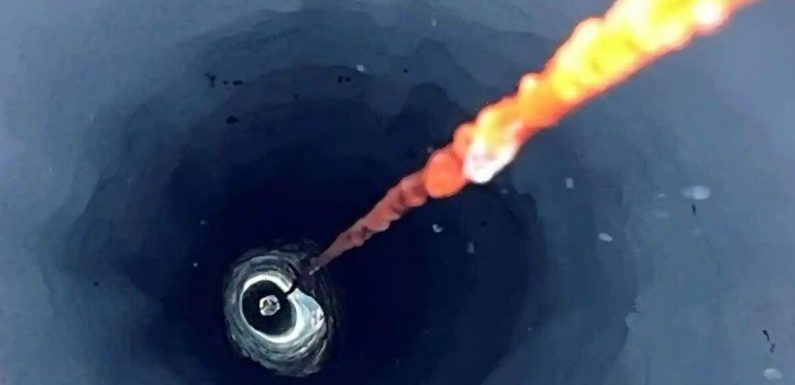
Antarctica: Scientists set up station on the Whillans Ice Stream
We use your sign-up to provide content in ways you’ve consented to and to improve our understanding of you. This may include adverts from us and 3rd parties based on our understanding. You can unsubscribe at any time. More info
A completely new ecosystem was uncovered just 500 metres below the Ross ice shelf in Antarctica. The scientists discovered a vast cathedral-like cavern containing a range of creatures including amphipods, which are a type of animal from the same family that includes lobsters, crabs, and mites. A team of researchers from New Zealand, as part of the National Institute of Water and Atmospherics (Niwa) and Geological and Nuclear Sciences were sent in to investigate what role this estuary could play in the melting of ice shelves as a result of climate change.
When they drilled down into the ice shelf and into the river below, their camera was swarmed by these tiny amphipods.
Niwa’s Craig Stevens said: “For a while, we thought something was wrong with the camera, but when the focus improved, we noticed a swarm of arthropods around 5mm in size.
“We’ve done experiments in other parts of the ice shelf and thought we had a handle on things, but this time big surprises were thrown up.”
He added that while studying climate change was an important aspect of the study, there was an element of discovery involved for the team as well.


“We were jumping up and down because having all those animals swimming around our equipment means that there’s clearly an important ecosystem there.”
The estuary was first discovered by the lead scientist on the project, Huw Horgan from Te Herenga Waka Victoria University of Wellington, after he spotted a groove in the ice while studying satellite imagery of the Ross Ice Shelf.
Mr Horgan noted that scientists have already been aware of the existence of hidden freshwater lakes and rivers below the frozen continent, however these bodies have yet to be directly surveyed.
He said: “Getting to observe and sample this river was like being the first to enter a hidden world.”

He noted that the researchers had left instruments inside the river in order to study its behaviour.
Their findings also extended after having deployed its mooring only days before the massive eruption of the Tongan volcano Hunga Tonga-Hunga Ha’apai.
After the eruption, the instruments detected a significant pressure change caused by the tsunami that made its way through the cavity.
After seeing the eruption Mr Stevens noted how connected the planet is.
DON’T MISS:
British scientists set to leave for EU as UK support ‘not enough’ [REVEAL]
Octopus Energy throws UK energy crisis lifeline with plan for NO BILLS [REPORT]
When is the next full moon? Exact time and date of June’s Full Moon [INSIGHT]

He added: “Here we are, in a forgotten corner of the world, seeing real-time influences from events that felt worlds away. It was quite remarkable.”
The undersea Tonga volcano, which erupted in January, triggered a 7.4 magnitude earthquake.
The quake sent tsunami waves crashing into the coast of the Pacific island, which has been left covered in ash and cut off from aid.
Waves from the Tsunami have struck California as evacuation alerts were issued in Australia, Japan and the US.
Source: Read Full Article